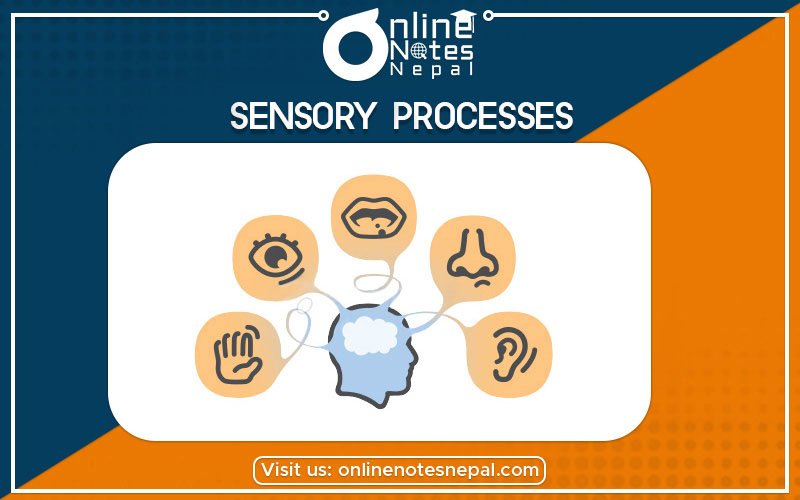Published by: Zaya
Published date: 14 Jun 2021

Sensory processes can be described in the following sub-headings:
Vision is the most important of all the senses. In order to understand the visual sensation, it is necessary to have knowledge of light energy. Light energy is the source of vision. When light strikes our eyes it is not the colour of the object but a small part of electromagnetic energy or radiation is experienced in the form of colour. Sensory processes are not possible without vision.
The length of the wave is measured by a nanometer(NM). NM is billions of a meter. A human can detect wavelengths between 380nm to 760nm.
There are three characters of wavelength: hue, amplitude, and saturation.
The visual sensation goes like this:
Cornea: The outer, transparent structure at the front of the eye that covers the iris, pupil and anterior chamber; it is the eye’s primary light-focusing structure. Macula: The portion of the eye at the centre of the retina that processes sharp, clear straight-ahead vision.
Pupil: The pupil is a hole located in the centre of the iris of the eye that allows light to strike the retina.
Lens: The lens is located in the eye. By changing its shape, the lens changes the focal distance of the eye.
Retina: is the nerve layer that lines the back of the eye, senses light, and creates impulses that travel through the optic nerve to the brain.
The second important sense after the vision is an audition. Through sound waves, we can listen to sound properly. Sound waves are the vibrations of the moving air. The auditory system is capable of transferring sound waves. Audition is possible through the ear, which has a complex auditory system that transfers sound wave into neural messages and finally to the brain.
Sound waves have different characters like wavelength(frequency), amplitude(intensity), and purity(timbre).
The ear is comprised of basically three components, outer ear, middle ear and, inner ear.
The outer ear, external ear, or Auris is the external portion of the ear, which consists of the auricle (also pinna) and the ear canal. It gathers sound energy and focuses it on the eardrum (tympanic membrane).
The middle ear is the portion of the ear internal to the eardrum, and external to the oval window of the inner ear. The mammalian middle ear contains three ossicles, which transfer the vibrations of the eardrum into waves in the fluid and membranes of the inner ear.
It is also called the labyrinth of the ear, part of the ear that contains organs of the senses of hearing and equilibrium.
The senses of smell(olfaction) and the senses of taste(gustation) both respond to substances in solution are referred to as the chemical senses. The chemical senses are interlinked in our everyday life.
Olfaction is a chemoreception that forms a sense of smell. Olfaction has many purposes, such as the detection of hazards, pheromones, and food. It integrates with other senses to form a sense of flavour. Olfaction occurs when odorants bind to specific sites on olfactory receptors located in the nasal cavity. Human beings have about 50 million receptors and can detect approximately 10,000 scents; while dogs can detect more than 200 millions receptors.
Taste (Gustation) is a sense that develops through the interaction of dissolved molecules with taste buds. Currently, five sub-modalities (tastes) are recognized, including sweet, salty, bitter, sour, and umami (savoury taste or the taste of protein). The taste buds contain approximately 20 tests of receptors and possess about 10,000 taste buds.
Awareness of body balance and movement is monitored by the vestibular system. The vestibular senses (the sensations of body rotation and of gravitation and movement) arise in the inner ear; the sense organs are the hair cells that send out signals over the auditory nerve.
The ability to know accurately the positions and movements of one’s skeletal joints. Kinesthesis refers to sensory input that occurs within the body. Postural and movement information is communicated via sensory systems by tension and compression of muscles in the body.
It is a sensation (as of warmth, cold, contact, or pain) aroused by the stimulation of end organs in the skin. Sensations on the skin are detected by cutaneous receptors. These receptors may feel sensations such as pain, tickle, cold, hot, soft, and rough.